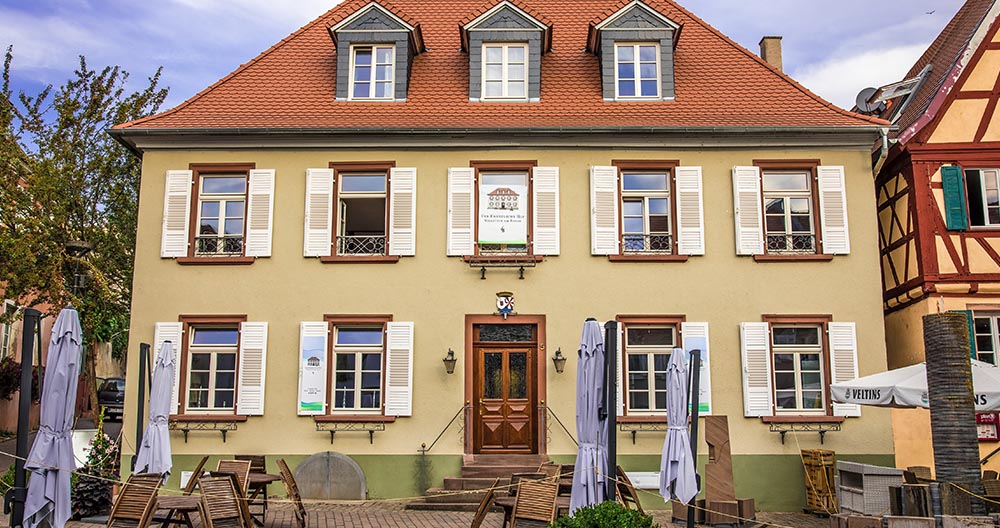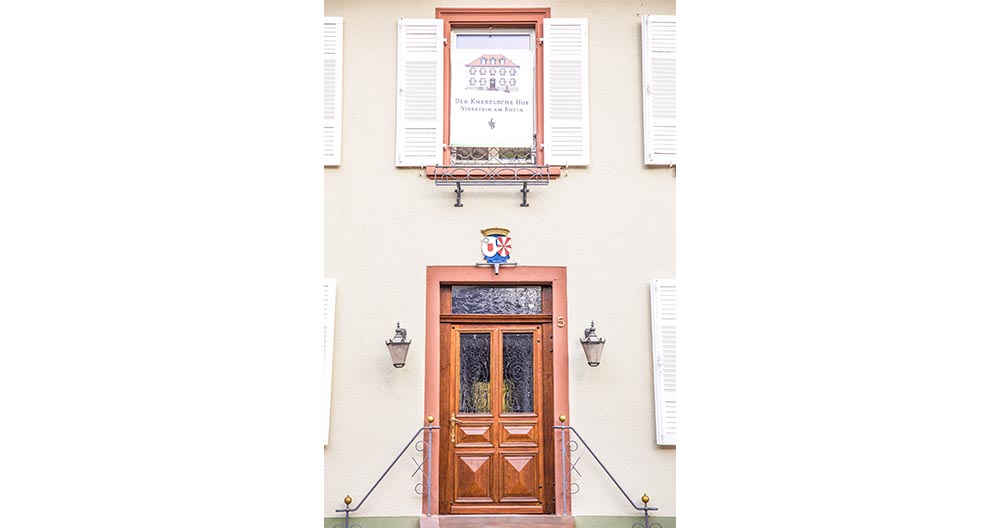

This is the Knebel’sche Court, a noble court dating back to the 16th century.
Can you see the two emblems above the front door? They tell us something about the former owners of the high house. On the left: the coat of arms of Court Marshal Phillip Christoph Knebel of Katzenelnbogen; and on the right, with the red and white rays, the coat of arms of his wife Maria Franziska Waldbott of Bassenheim. And right above: the golden crown of barons, which unmistakably signaled the high status of the two owners. This way the Nierstein citizens knew right away that they didn’t have just “anyone” but very important people as their neighbor! – Maybe such a sign was even necessary, because in its early years the property was probably not as impressive as it may seem today: investigations by the Rhein-Main University of Applied Sciences recently showed that there were initially only a few smaller buildings and an extension for a chapel. Which shows that the nobility may not have resided here quite as feudally as commonly assumed.
It was not until 1890, that the courtyard was rebuilt into its current form. From then on it was used as a farm yard and as a winery offering guest rooms. But in the cellar of the building, two rooms from earlier times have been preserved, which once served as prison cells. But of course they are no longer in use today!
Our next stop is on the opposite side of the street: The “Herberge zum Weißen Ross” or “The White Horse Coaching Inn”.



This is the Knebel’sche Court, a noble court dating back to the 16th century.
Can you see the two emblems above the front door? They tell us something about the former owners of the high house. On the left: the coat of arms of Court Marshal Phillip Christoph Knebel of Katzenelnbogen; and on the right, with the red and white rays, the coat of arms of his wife Maria Franziska Waldbott of Bassenheim. And right above: the golden crown of barons, which unmistakably signaled the high status of the two owners. This way the Nierstein citizens knew right away that they didn’t have just “anyone” but very important people as their neighbor! – Maybe such a sign was even necessary, because in its early years the property was probably not as impressive as it may seem today: investigations by the Rhein-Main University of Applied Sciences recently showed that there were initially only a few smaller buildings and an extension for a chapel. Which shows that the nobility may not have resided here quite as feudally as commonly assumed.
It was not until 1890, that the courtyard was rebuilt into its current form. From then on it was used as a farm yard and as a winery offering guest rooms. But in the cellar of the building, two rooms from earlier times have been preserved, which once served as prison cells. But of course they are no longer in use today!
Our next stop is on the opposite side of the street: The “Herberge zum Weißen Ross” or “The White Horse Coaching Inn”.


